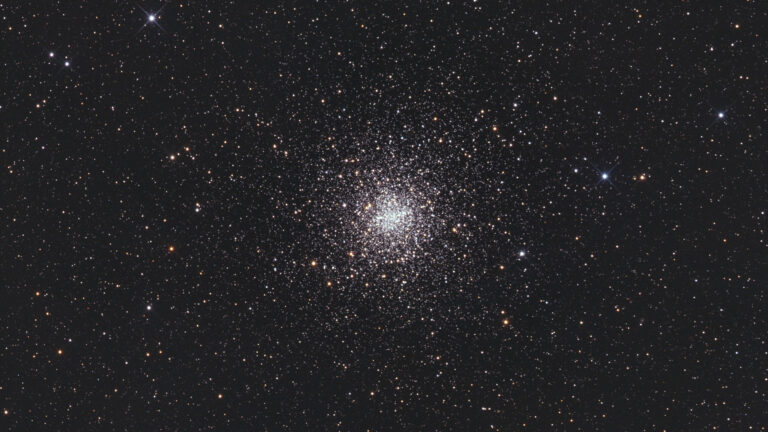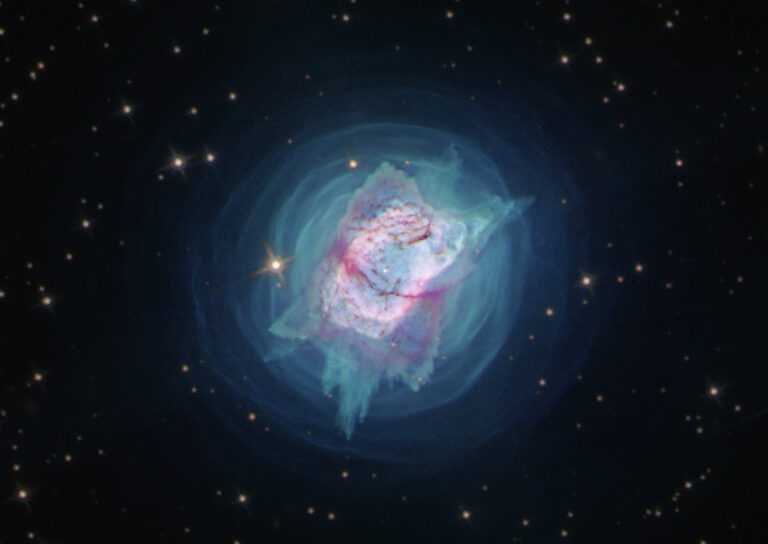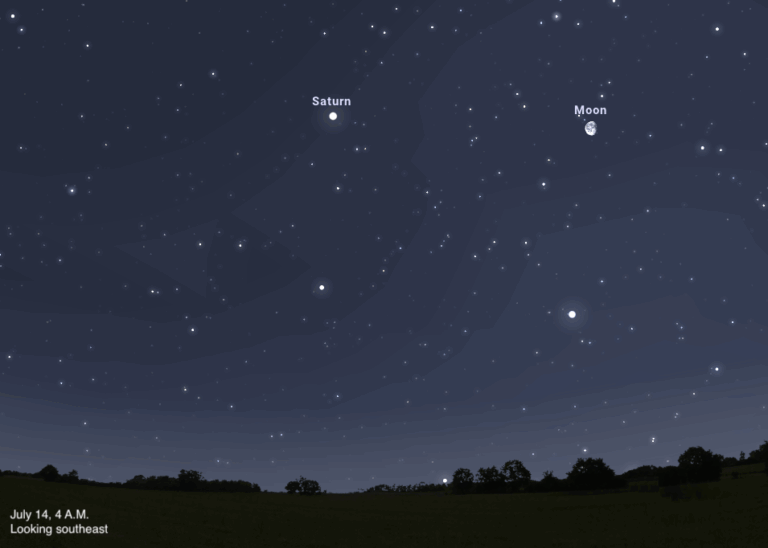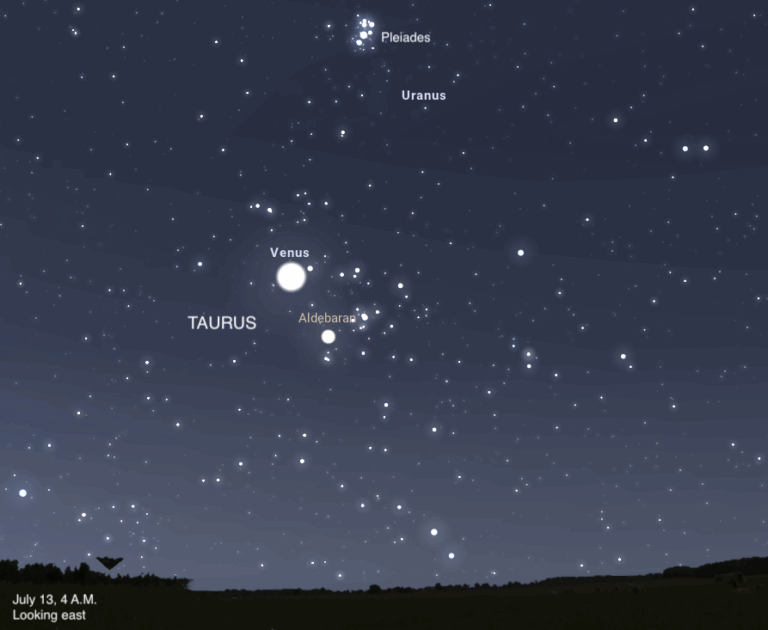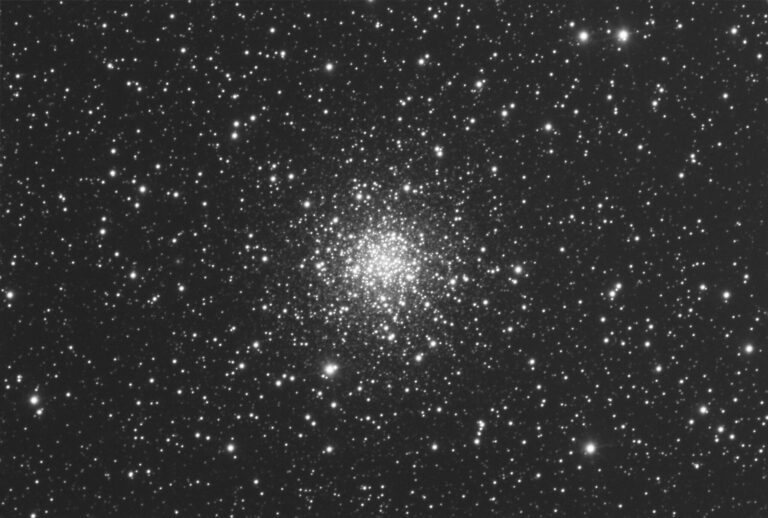
Key Takeaways:
Earlier this year, skywatchers were thrilled to learn that Comet 12P/Pons-Brooks will appear in the darkened sky during the April 2024 total solar eclipse. The comet will hang northeast of the eclipsed Sun, visible with binoculars or perhaps even the naked eye during totality. But, it turns out, Pons-Brooks isn’t satisfied to wait until next year for some attention. The approaching comet recently underwent an outburst, kicking it from nearly 17th magnitude to 12th magnitude and rendering it visible in moderate scopes for at least a brief time.
Return trip
Comets like Pons-Brooks follow long, looping orbits around the Sun, spending much of their time in the outer solar system far from our star. At those distances, temperatures keep any volatiles (substances such as water and carbon dioxide) on their surface frozen as ice. As a comet approaches the Sun and temperatures rise, those ices begin to sublimate — turning directly from a solid to a gas — jetting away and creating the object’s trademark tail.
Pons-Brooks has an orbit with a period of about 70 years and is currently inbound from the outer solar system for a rendezvous with the Sun early next year. It will reach perihelion, the closest point in its orbit to the Sun, on April 21, when it will swing around our star at a distance of about 0.8 astronomical unit (74.4 million miles or 119.7 million kilometers; 1 astronomical unit [AU] is the average Earth-Sun distance).
A surprise outburst
Right now, Pons-Brooks is still some 3.8 AU from the Sun and 3.5 AU from Earth. It has been steadily growing brighter but remained faint thanks to its distance. So previously, the magnitude 16.6 comet required a large class of amateur scope to pick up and was reserved only for more experienced or well-equipped searchers and photographers.
But then, on July 20, observer Elek Tamás went looking for the comet in the skies above Hungary — and discovered a magnitude 11.6 object in its place. The comet had undergone a random outburst and subsequent brightening virtually overnight. Others quickly confirmed the comet had brightened, rendering it visible in smaller instruments much more accessible to backyard observers.
For the past several days, Pons-Brooks has remained around magnitude 11.6 and 11.7, according to the Comet Observation database. Even better, the outburst created a fairly compact coma whose light is condensed enough to pick up in small to moderate backyard scopes of 4 inches or larger, at least for now.
You can check out some recent images of the flare-up on Seiichi Yoshida’s comet page.
The comet will likely begin to fade again into large-telescope-only territory as its coma spreads out and material liberated from the surface moves away from the central nucleus. Of course, another outburst is always possible; according to comet researcher Richard Miles, Pons-Brooks has had such flare-ups in the past, and more than once per perihelion visit. However, such events are unpredictable, so we’ll simply have to wait and see. And ultimately, astronomers still expect Pons-Brooks to brighten in the coming months as it approaches perihelion. It’s expected to reach at least 5th magnitude in the spring, landing it squarely in binocular visibility by the time the eclipse rolls around. Another outburst around that time would truly be fantastic.
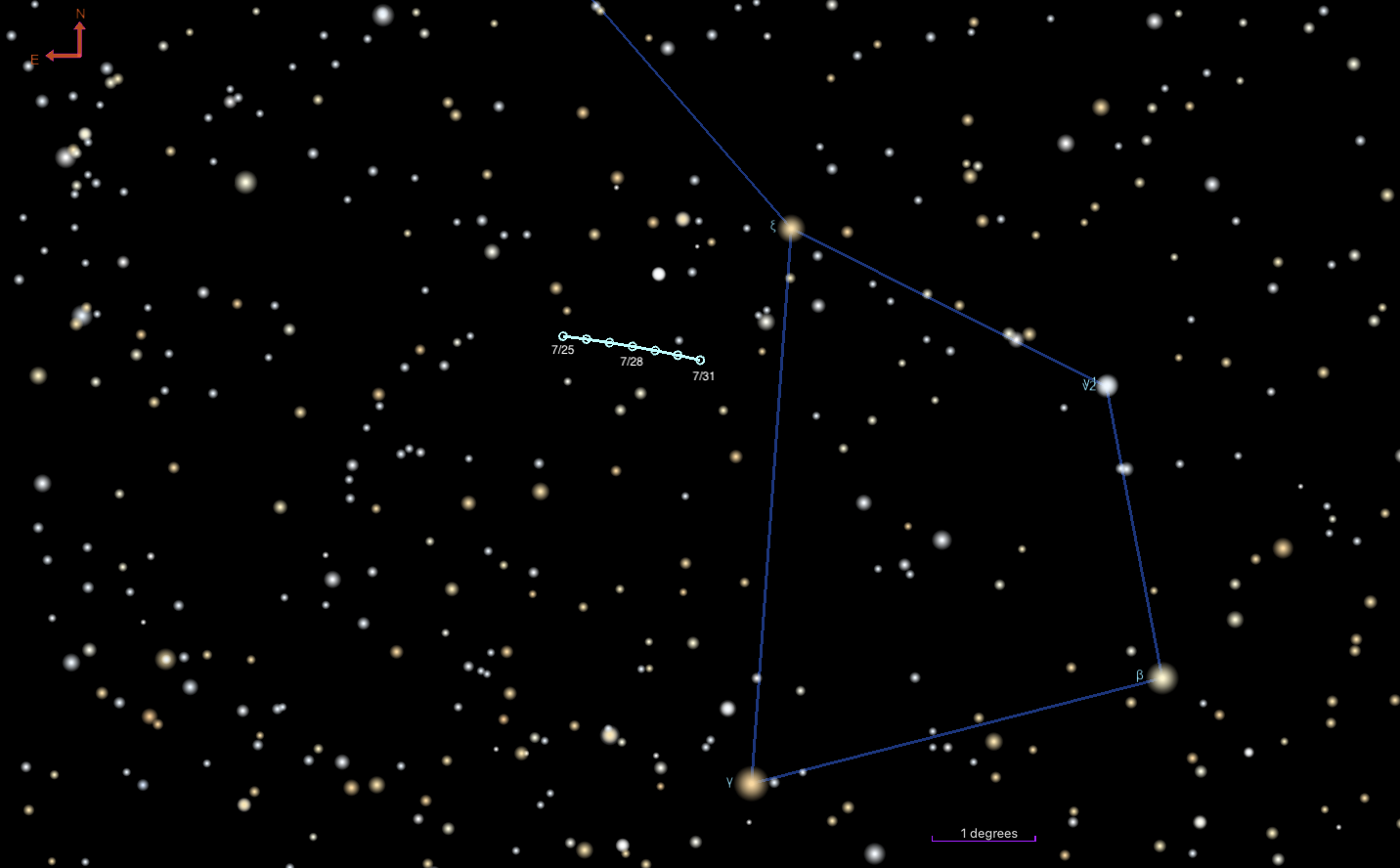
How to observe Pons-Brooks now
If you want to get outside and try to catch Pons-Brooks while it’s still bright enough for your backyard scope, you’re in luck — as long as you’re in the Northern Hemisphere. The comet is currently in Draco, a circumpolar constellation in the north, meaning it’s visible all night long from many locations above the equator.
As soon as the sky grows dark after sunset, look north to locate Polaris, the North Star, at the tip of the Little Dipper’s handle. Right now, in the evenings Draco’s head lies to the upper right of the star, as the Little Dipper appears to stand on the end of that handle with its bowl horizontal as if it’s pouring water straight down to the ground.
Tonight, Pons-Brooks sits just 2.5° south-southeast of 4th-magnitude Xi (ξ) Draconis, or 4.8° northeast of brighter magnitude 2.2 Gamma (γ) Draconis. The comet is moving slowly westward, covering about 0.2° per night, so it will remain in roughly the same spot for the next week.
The sooner you look, the better — the Moon is quickly waxing toward Full and will make the background sky brighter along the way, rendering something small and faint like the still-distant comet difficult to pick up. By the time dark skies return, the comet may have faded once more.
But don’t worry; this likely short-lived outburst is just the preview. Pons-Brooks certainly has more in store for us as next spring and its stunning solar eclipse approach.




